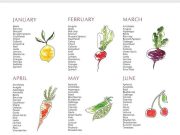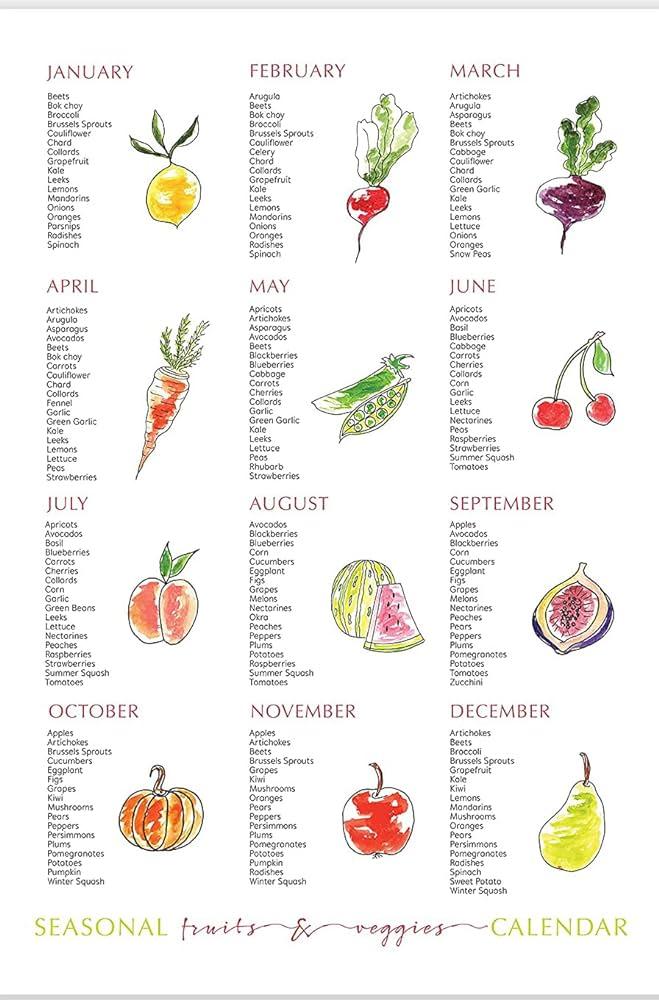In a world where strawberries can be plucked from grocery store shelves in the heart of winter and pumpkins make their appearance well before the first autumn leaf falls, the art of eating seasonally often feels like a forgotten practice. Yet, beneath the convenience of year-round produce lies a tapestry of flavors and nutrients that shifts with the seasons, offering a harmonious balance with nature’s rhythms. Imagine biting into a sun-ripened tomato at the peak of summer, its flavor a vibrant burst of warmth and vitality, or savoring the earthy sweetness of a roasted winter squash that mirrors the coziness of a crackling fire. Eating seasonally is not merely about food; it’s a celebration of the earth’s bounty, a sustainable choice that nurtures both body and planet. In this article, we explore the myriad benefits of aligning our plates with the seasons, from enhanced taste and nutrition to environmental and economic gains, inviting you to rediscover the joy and wisdom in nature’s ever-changing menu.
Harvesting Health: The Nutritional Edge of Seasonal Produce
Embracing the rhythm of the seasons not only connects us to nature’s cycle but also brings a plethora of nutritional advantages to our tables. Seasonal produce is often harvested at its peak ripeness, ensuring that it is rich in vitamins, minerals, and antioxidants. These nutrients are crucial for boosting the immune system, enhancing energy levels, and supporting overall well-being. When fruits and vegetables are picked in season, they are fresher and more flavorful, reducing the need for artificial additives or preservatives.
- Cost-effective: When produce is in abundance, it tends to be less expensive.
- Eco-friendly: Eating seasonally reduces the demand for out-of-season produce, which often requires energy-intensive methods of transportation and storage.
- Variety and Diversity: Each season introduces a new selection of fruits and vegetables, encouraging a varied diet.
By aligning our diets with the earth’s natural bounty, we not only enhance our health but also support sustainable agricultural practices. This mindful approach to eating nurtures both our bodies and the planet.

Environmental Impact: How Eating Seasonally Supports Sustainability
Opting to eat foods that are in season offers a myriad of environmental benefits, making it a crucial step towards a more sustainable lifestyle. Local and seasonal produce typically requires fewer resources to grow and transport, which significantly reduces the carbon footprint associated with your meals. When fruits and vegetables are grown in their natural season, they often require less human intervention in the form of pesticides, fertilizers, and artificial heating, leading to healthier soil and a reduction in chemical runoff into waterways.
- Reduced Food Miles: Eating seasonally means your produce is more likely to be sourced locally, cutting down on the long distances food often travels, thereby decreasing transportation emissions.
- Natural Resource Efficiency: Seasonal farming practices align with the earth’s natural cycles, utilizing resources like water and sunlight more efficiently.
- Supporting Biodiversity: Encouraging the growth of a variety of crops suited to each season helps maintain a balanced ecosystem, which is essential for soil health and pollinator support.

Flavorful and Fresh: Unlocking the Taste of In-Season Foods
Embracing the rhythm of nature by eating foods at the peak of their season not only enriches your palate but also nourishes your body with the freshest nutrients. When fruits and vegetables are harvested at their natural peak, they are richer in flavor, color, and aroma, offering a culinary experience that is both satisfying and wholesome. Additionally, in-season produce is often more affordable due to lower transportation and storage costs, making it a win-win for both your taste buds and your wallet.
- Enhanced Flavor: Seasonal produce is harvested at its peak ripeness, ensuring the best taste.
- Higher Nutritional Value: Freshly picked foods retain more nutrients, providing your body with essential vitamins and minerals.
- Eco-Friendly: Reducing the need for long-distance transportation helps lower carbon footprints.
- Cost-Effective: Local, in-season foods are often less expensive due to reduced shipping and storage costs.
By aligning your diet with the natural growing cycles, you can enjoy a diverse array of produce throughout the year, each offering its own unique benefits and culinary potential. Whether it’s the crisp sweetness of a summer peach or the earthy warmth of a winter squash, each season brings with it an opportunity to explore new flavors and textures.

Practical Tips: Incorporating Seasonal Eating into Your Lifestyle
Transitioning to a seasonal eating pattern can be both enjoyable and rewarding. Begin by exploring local farmers’ markets, which offer a treasure trove of fresh, in-season produce. This not only supports local agriculture but also provides a direct connection to the rhythm of nature. As you wander through the stalls, you’ll find a variety of fruits and vegetables at their peak flavor and nutritional value.
To seamlessly integrate seasonal eating into your routine, consider these practical tips:
- Plan Meals Around Seasonal Ingredients: Before heading to the grocery store, research what fruits and vegetables are in season. This can inspire new recipes and help diversify your diet.
- Preserve the Harvest: Learn techniques like canning, freezing, or drying to enjoy seasonal produce year-round.
- Join a CSA: Community Supported Agriculture (CSA) programs provide a weekly box of seasonal produce, often introducing you to new ingredients.
- Adapt Recipes: Swap out-of-season ingredients in your favorite recipes with those that are currently abundant.
By making these small adjustments, you’ll not only enhance your meals but also embrace a more sustainable and healthful lifestyle.































